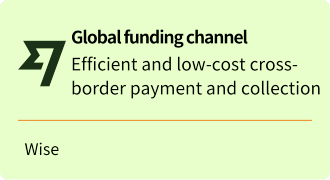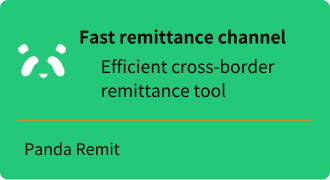TFSA vs RRSP vs Non-Registered - Canada Investment Account Guide
[DISCLAIMER] This article is for educational and informational purposes only and does not constitute investment advice. Readers should consult with qualified financial professionals before making any investment decisions.
As a quantitative trader and financial educator who has spent years in the investment industry, I often receive questions like: "I just moved to Canada, which investment account should I open?", "Is TFSA or RRSP better for me?", or "Why does my friend recommend using a non-registered account for stock trading?" Today, I'll use plain language to help you thoroughly understand these questions and avoid common pitfalls when choosing investment accounts.
Whether you're a new immigrant, international student, or someone who has worked in Canada for many years, this article will help you find the most suitable investment account combination. Don't worry about complex tax rules and terminology—as I often say: "Choosing the right account type might be more important than choosing the right investments!"
Ⅰ. Three Main Canadian Investment Accounts: One-Minute Overview
In Canada, investment accounts primarily fall into three categories: Tax-Free Savings Account (TFSA), Registered Retirement Savings Plan (RRSP), and non-registered accounts. They're like three friends with different personalities: TFSA is flexible and versatile, RRSP is steady and focused on the long-term, while non-registered accounts offer freedom but come with a heavier tax burden.
I often use "three piggy banks" to explain these accounts:
- TFSA is like a magic piggy bank where your money grows naturally, and you don't have to share with the tax wizard (CRA) when you take it out
- RRSP is like a delayed-payment piggy bank, giving you tax benefits when you put money in, but requiring payment when you take it out later
- Non-registered accounts are like regular piggy banks where the tax wizard takes a portion whenever you earn returns
It's important to understand that these investment accounts aren't just personal tax planning tools—they're carefully designed social policy instruments created by the Canadian government to encourage savings, stimulate economic investment, and add stability to the country's long-term economic development and social welfare system. By offering these tax advantages, the government is effectively investing in the nation's future.
Ⅱ. TFSA: The Tax-Free Tool Even Small Investors Can Leverage
2.1. What is a TFSA and Why is it So Popular?
TFSA (Tax-Free Savings Account) is an investment vehicle introduced by the Canadian government in 2009. Don't be misled by its name—it's not just a "savings account" but a powerful tax-exempt investment tool!
The most attractive feature of the TFSA is that all investment returns generated within the account are completely tax-free. Whether it's dividends, interest, or capital gains, you don't need to pay a penny in taxes. Imagine if a stock you purchased in your TFSA multiplied tenfold—those additional 9 times the original value would be entirely yours, with no need to share with the tax authorities.
For those just starting to invest, TFSA is undoubtedly the most beginner-friendly option. It has no minimum income requirement—as long as you're at least 18 years old with a valid Social Insurance Number (SIN), you can open a TFSA account.
The introduction of the TFSA actually had unique national economic motivations: it was established after the 2008 global financial crisis to encourage Canadians to increase savings and investment, stimulating economic recovery. Simultaneously, it provided tax benefits to demographics that traditional RRSPs didn't serve as well (such as low-income earners, young people, and short-term investors), thereby expanding the social equity of national tax benefits. While the government "sacrificed" some tax revenue in the short term, in the long run, this encouraged more people to participate in investment markets, strengthening national economic resilience.
2.2. TFSA Contribution Limits: Your Personal Tax-Free Space
Every Canadian resident has their own TFSA contribution limit, which accumulates over time. The annual contribution limit for 2025 is $7,000 CAD, with a cumulative limit reaching $102,000 CAD from 2009 to 2025 (assuming you were at least 18 years old in 2009).
I often compare the TFSA to a "tax-free garden": each year, the government gives you a new plot of tax-free land (annual contribution room), where you can plant any investment "seeds" you like. Even if you don't fully utilize it, this land remains yours forever, available for future use.
It's important to note that exceeding your contribution limit will result in a monthly penalty of 1%, so it's crucial to closely track your contribution room. You can check your current limit through the CRA's My Account website or by calling the CRA.
2.3. TFSA Withdrawal and Re-contribution Rules
Another major advantage of the TFSA is its flexible withdrawal rules. You can withdraw from your TFSA at any time, and all withdrawals are tax-free. Better yet, any amount you withdraw will be added back to your contribution room in the following calendar year.
For example: If you withdraw $10,000 from your TFSA this year, your contribution room next year will be: $7,000 (the 2026 new limit) + $10,000 (the amount you withdrew this year) = $17,000.
However, note that if you want to put money back after withdrawing in the same year, you must wait until the next calendar year, or it will be considered an over-contribution. This point is often overlooked, causing investors to incur penalties unintentionally.
2.4. Who Benefits Most from a TFSA? Ideal Usage Scenarios
TFSAs are particularly suitable for:
- Low and middle-income earners (people in lower marginal tax brackets)
- Those expecting higher income after retirement or with generous pension plans
- People who need to use funds in the medium term (5-10 years)
- Young people just starting to invest
- Those saving for emergency funds or specific goals (like a house down payment)
My recommendation is: regardless of your income level, try to maximize your TFSA contribution room, especially if you're just starting to invest. It's like a "free lunch" in the investment world—too good to pass up!
Ⅲ. RRSP: Your Long-term Retirement Partner
3.1. What is an RRSP and Its Tax Advantages
RRSP (Registered Retirement Savings Plan) is a retirement savings plan introduced by the Canadian government in 1957, specifically designed to encourage Canadians to save for retirement.
The greatest advantage of an RRSP is that contributions can be deducted from your taxable income for the year, thereby reducing your current tax burden. This means if you're in a higher tax bracket, RRSP contributions can save you significant tax dollars.
For example: If your annual income is $100,000, placing you in a 30% marginal tax bracket, and you contribute $10,000 to your RRSP, your taxable income will drop to $90,000, directly saving you about $3,000 in taxes!
However, RRSPs aren't completely tax-free but rather "tax-deferred"—when you withdraw funds from your RRSP in the future, you'll need to include the withdrawn amount in that year's income and pay taxes according to your tax rate at that time. The logic behind this is: you typically contribute during your high-income working years (enjoying tax benefits at higher rates) and withdraw during your lower-income retirement years (paying taxes at lower rates), thus optimizing your tax situation.
From a national economic perspective, the RRSP program has profound socioeconomic purposes: it reduces the government's future pension burden, encourages citizens to plan for their own retirement, while channeling substantial funds into capital markets, promoting economic growth and job creation. This "private pension" system is also an important pillar of Canada's mixed retirement security framework.
3.2. RRSP Contribution Limits: More Savings for Retirement
The annual RRSP contribution limit is: 18% of your previous year's income or the annual maximum limit ($32,490 for 2025), whichever is lower, plus unused contribution room from previous years.
Unlike the TFSA, RRSP contribution limits are directly related to your income—the higher your income, the larger your potential contribution room. This reflects the value of RRSP as a tax planning tool for higher-income earners.
You can check your RRSP contribution limit on the Notice of Assessment that CRA sends you, or through CRA's My Account website.
3.3. RRSP Withdrawal Rules and Retirement Conversion
RRSPs are not designed for short-term withdrawals. Generally, withdrawals from an RRSP not only incur taxes but also permanently lose that contribution room (unlike TFSAs).
However, there are two special tax-free withdrawal programs for RRSPs:
- Home Buyers' Plan (HBP): allows withdrawals of up to $35,000 for purchasing a first home, to be repaid over 15 years
- Lifelong Learning Plan (LLP): allows withdrawals of up to $20,000 for continuing education, to be repaid over 10 years
At age 71, you must convert your RRSP to a RRIF (Registered Retirement Income Fund) or purchase an annuity and begin withdrawing funds systematically. This regulation ensures that RRSPs are indeed used for retirement purposes rather than indefinite tax deferral.
3.4. Who Should Use an RRSP? Ideal Usage Scenarios
RRSPs are particularly suitable for:
- People in high-income phases with higher marginal tax rates (above 30%)
- Those expecting significantly lower income after retirement
- People who plan to hold investments long-term until retirement
- Those with adequate emergency funds who won't need to access RRSP funds in the short term
- People planning to purchase their first home or return to school (utilizing HBP or LLP)
I often advise clients: If you're at the peak of your career, maximize RRSP contributions first to get immediate tax benefits; if you're just starting your career or have lower income, you might accumulate RRSP contribution room and use it when your income increases.
Ⅳ. Non-Registered Accounts: Flexible but With a Higher Tax Burden
4.1. Basic Features of Non-Registered Accounts
Non-registered accounts, as the name implies, are regular investment accounts not registered with the CRA. They have no contribution limits and can invest in various financial products but lack the tax advantages of TFSAs and RRSPs.
In non-registered accounts, different types of investment returns have different tax treatments:
- Interest income: 100% included in income, taxed at your full marginal rate
- Canadian eligible dividends: benefit from the dividend tax credit, resulting in lower effective tax rates than regular income
- Capital gains (investment appreciation): only 50% included in taxable income, the other 50% tax-free
For capital gains example: If your stocks in a non-registered account gain $10,000, only $5,000 will be added to your taxable income. If your marginal tax rate is 30%, the actual tax burden would be $5,000 × 30% = $1,500, equivalent to 15% of your total profit.
From a national economic perspective, the partial tax benefits of non-registered accounts (such as 50% inclusion for capital gains and dividend tax credits) reflect the government's policy direction to encourage long-term investment and support Canadian businesses. These tax policies not only help individual investors save on taxes but also promote capital market stability and financing convenience for Canadian enterprises, creating job opportunities and driving national economic growth. Through these targeted tax policies, the government guides private capital toward directions beneficial to national economic development.
4.2. Tax Management and Capital Losses in Non-Registered Accounts
A unique advantage of non-registered accounts is the ability to use capital losses (Capital Loss) to offset capital gains, thereby reducing tax liability.
When you sell investments at a loss in a non-registered account, these losses can be:
- Used to offset capital gains in the current year
- Carried back up to 3 years or carried forward indefinitely if there aren't enough capital gains in the current year
For example: If you have $5,000 in capital gains and $8,000 in capital losses this year, you can not only completely offset this year's capital gains (no tax required) but also retain $3,000 in capital losses to offset future capital gains or those from the past 3 years.
This feature makes non-registered accounts a powerful tax planning tool, especially for investors who have already maximized their TFSA and RRSP contribution room.
4.3. Who Should Use Non-Registered Accounts? Ideal Usage Scenarios
Non-registered accounts are particularly suitable for:
- Investors who have already maxed out their TFSA and RRSP contribution room
- Investors looking to implement tax-loss harvesting
- Investors seeking Canadian dividend tax credits
- People needing larger investment space beyond TFSA/RRSP limits
- Investors pursuing absolute flexibility, potentially needing large amounts of capital at any time
My practical advice: Non-registered accounts are best suited for tax-efficient investments, such as Canadian stocks (benefiting from dividend tax credits) and low-dividend, long-term growth assets (delaying capital gains realization). High-interest products and foreign assets are better placed in TFSAs or RRSPs.
Ⅴ. Tax Rate Comparison of the Three Accounts: Clear Data Analysis
To help you more intuitively understand the tax differences between these three types of accounts, I've compiled the following comparison table:
| Tax Item | TFSA | RRSP | Non-Registered |
|---|---|---|---|
| Contributions | After-tax income, no benefits | Pre-tax income, tax-deductible | After-tax income, no benefits |
| Investment returns (dividends) | Tax-free | Tax-deferred, taxed upon withdrawal | Taxable, but with dividend tax credit |
| Investment returns (interest) | Tax-free | Tax-deferred, taxed upon withdrawal | Fully included in taxable income |
| Capital gains | Tax-free | Tax-deferred, taxed upon withdrawal | 50% included in taxable income* |
| Withdrawal tax rate | Tax-free | Taxed as income | Not applicable (taxed as capital gains when sold) |
*Note: As of June 25, 2024, capital gains exceeding $250,000 CAD have their inclusion rate increased from 50% to 66.67% (two-thirds).
Real-world example: Assume you invest $10,000, achieve a 50% return ($5,000), and your marginal tax rate is 30%. The after-tax returns in different accounts would be:
- TFSA: $5,000 (completely tax-free)
- RRSP: $5,000 × (1-30%) = $3,500 (upon withdrawal)
- Non-registered account: $5,000 - ($5,000 × 50% × 30%) = $4,250 (capital gains)
This simple calculation demonstrates the tremendous advantage of TFSAs in after-tax returns, especially for investments with significant appreciation.
Ⅵ. How to Combine the Three Accounts? Practical Strategy Sharing
6.1. Priority Strategy: Which Account to Use First—TFSA, RRSP, or Non-Registered?
Based on years of investment experience and tax planning, I recommend the following priority strategies:
Scenario 1: Annual income below $50,000
- First, max out your TFSA
- Consider a non-registered account if you have remaining funds
- Temporarily preserve RRSP contribution room, using it when your income increases
Scenario 2: Annual income $50,000-$100,000
- Establish an emergency fund (can use TFSA)
- Max out your TFSA
- Contribute to RRSP enough to lower your income to a lower tax bracket
- Use a non-registered account for any remaining funds
Scenario 3: Annual income over $100,000
- Establish an emergency fund
- Maximize RRSP contributions (to obtain significant tax benefits)
- Max out your TFSA
- Use a non-registered account for any remaining funds
Remember, this is general guidance, and specific strategies should be adjusted according to individual circumstances. For instance, if you expect higher income after retirement, you might prioritize TFSA over RRSP.
6.2. Asset Allocation Strategy: Which Investment Products Are Suitable for Each Account?
Intelligent asset allocation can maximize tax benefits. Here are asset allocation recommendations based on "tax efficiency":
Best for TFSA:
- High-growth stocks (with significant capital appreciation potential)
- High-interest bonds and GICs
- REITs and high-dividend stocks
- U.S. stocks (avoiding the 15% withholding tax in non-registered accounts)
Best for RRSP:
- U.S. stocks and ETFs (exempt from U.S. withholding tax within RRSP)
- High-interest fixed-income products
- Foreign dividends not eligible for Canadian dividend tax credits
Best for Non-Registered Accounts:
- Canadian stocks (benefiting from dividend tax credits)
- Low-dividend, long-term holding assets (tax deferral)
- Investments that might generate capital losses (useful for tax-loss harvesting)
- Tax-efficient ETFs (such as Horizons' swap-based ETF series)
This "tax efficiency first" asset allocation strategy can significantly enhance after-tax returns over the long term.
Ⅶ. Account Selection Strategies for Different Life Stages
Investment strategies should adapt to life stages, and so should account selection.
7.1. Young Workers (25-35 years old)
At this stage, your income may be steadily increasing but hasn't reached its peak:
- Priority on establishing an emergency fund (3-6 months of living expenses), possibly in a high-interest savings account within a TFSA
- Actively filling TFSA space, investing in growth stocks or ETFs
- Beginning RRSP contributions if income has reached higher tax brackets
- Considering using the Home Buyers' Plan (HBP) for home purchase savings
7.2. Mid-Career (35-50 years old)
At this point, you may be at your peak earning period, making tax planning increasingly important:
- Continue maximizing TFSA contributions
- Actively utilize RRSP to reduce tax burden, especially in high-income years
- Begin using non-registered accounts if TFSA and RRSP are maxed out
- Consider family tax planning strategies, such as spousal RRSPs
7.3. Pre-Retirement (50-65 years old)
Approaching retirement, withdrawal strategies need more careful planning:
- Continue filling TFSA space
- Adjust RRSP contribution strategy based on expected retirement income
- Start planning RRSP/RRIF withdrawal schedules
- Consider realizing partial capital gains in non-registered accounts before retirement (if you'll drop to a lower tax bracket after retirement)
7.4. Retirement (65+ years old)
After retirement, the focus shifts to optimizing withdrawal sequences to minimize taxes:
- Prioritize withdrawals from non-registered accounts
- Next consider RRSP/RRIF (must begin withdrawals at age 71)
- Use TFSA funds last (completely tax-free)
- Continue transferring unused income to TFSA to enjoy ongoing tax-free growth
This "layered withdrawal" strategy can effectively extend the lifespan of retirement funds and maximize after-tax returns.
Ⅷ. Common Misconceptions and Easily Overlooked Considerations
8.1. Misconception 1: TFSA Is Only Suitable for Cash Savings
Many people see "Savings Account" and assume TFSAs are only good for deposits—this is a massive misconception! TFSAs can hold almost all investment products, including stocks, ETFs, bonds, mutual funds, etc. Given the completely tax-free advantage, TFSAs are actually ideal for investments with high growth potential.
Misconception 2: RRSP Is the Only Retirement Tool
Although "Retirement" is in the RRSP name, TFSA is equally an excellent retirement savings tool, especially for those expecting higher retirement income. In many cases, a combination of TFSA and RRSP is the optimal strategy.
Misconception 3: Overlooking Tax Optimization Opportunities in Non-Registered Accounts
Many investors view non-registered accounts as a "last resort" option, overlooking their value in tax planning, such as tax-loss harvesting and dividend tax credits. For large-fund investors, wise use of non-registered accounts is equally important.
8.2. Key Considerations
- TFSA Over-Contribution Risk: Closely track your TFSA contribution room, especially when re-contributing after withdrawals
- TFSA Trap for Americans: U.S. citizens/green card holders' TFSA earnings remain taxable in the U.S., with additional reporting requirements
- Foreign Asset Reporting: If your foreign assets total over $100,000 CAD, you need to file Form T1135 with the CRA
- RRSP Withdrawal Withholding Tax: Financial institutions withhold taxes on RRSP withdrawals (amount depends on withdrawal size)
- Attribution Rules: Contributions to spousal RRSPs need to consider attribution rules to avoid tax issues
Ⅸ. Conclusion: Finding Your Optimal Account Combination and Social Responsibility
After such detailed analysis, you should now have a clearer understanding of Canada's three major investment accounts. Remember, no single account type is absolutely the "best" choice—the key is to find the most suitable account combination based on your personal situation, income level, investment goals, and retirement plans.
I recommend starting small: if you're just beginning to invest, open a TFSA first and make monthly contributions to index ETFs; as your income increases, consider an RRSP; when both are maxed out, expand to non-registered accounts. This progressive strategy is both simple and effective.
As investors, while we enjoy these tax benefits provided by the government, we should also recognize this as a social contract: the government encourages us to take responsibility for our future, reducing the burden on social welfare systems while channeling funds into markets to promote economic growth. Using these accounts wisely is not only a smart personal financial decision but also a contribution to Canada's social stability and economic prosperity.
Finally, I must emphasize that although account selection is important, investment behavior (such as maintaining long-term investments and low-cost diversification) is the determining factor for success. Even the best account selection cannot compensate for poor investment decisions.
Which investment account do you use most frequently? Do you have any questions about account selection? Feel free to share your thoughts and questions in the comments! In my next article, I'll explore the taxation and compliance aspects of Canadian investment accounts in detail, helping you understand how to optimize tax reporting strategies, reduce unnecessary tax burdens, while maintaining good tax citizenship. Stay tuned!







